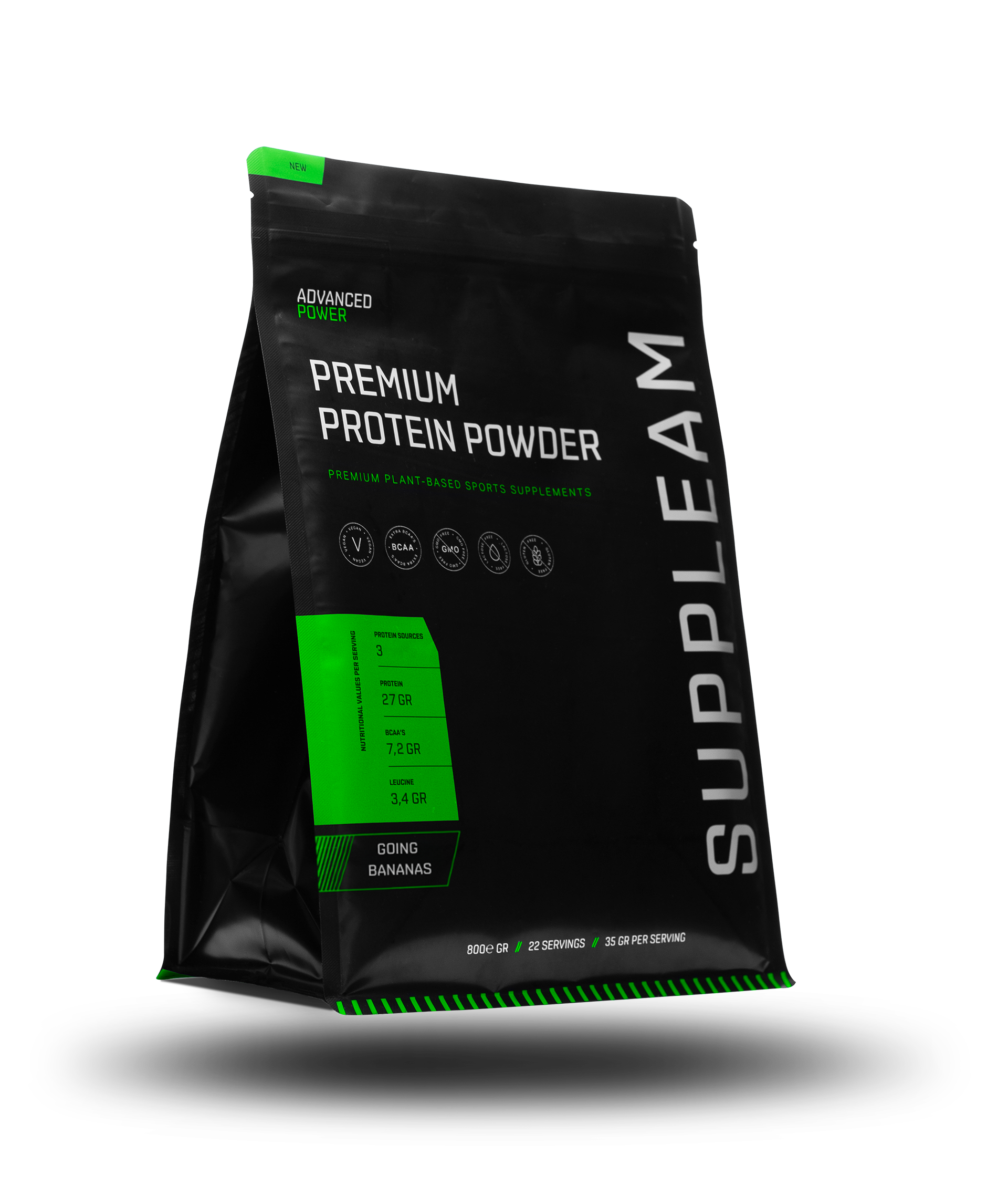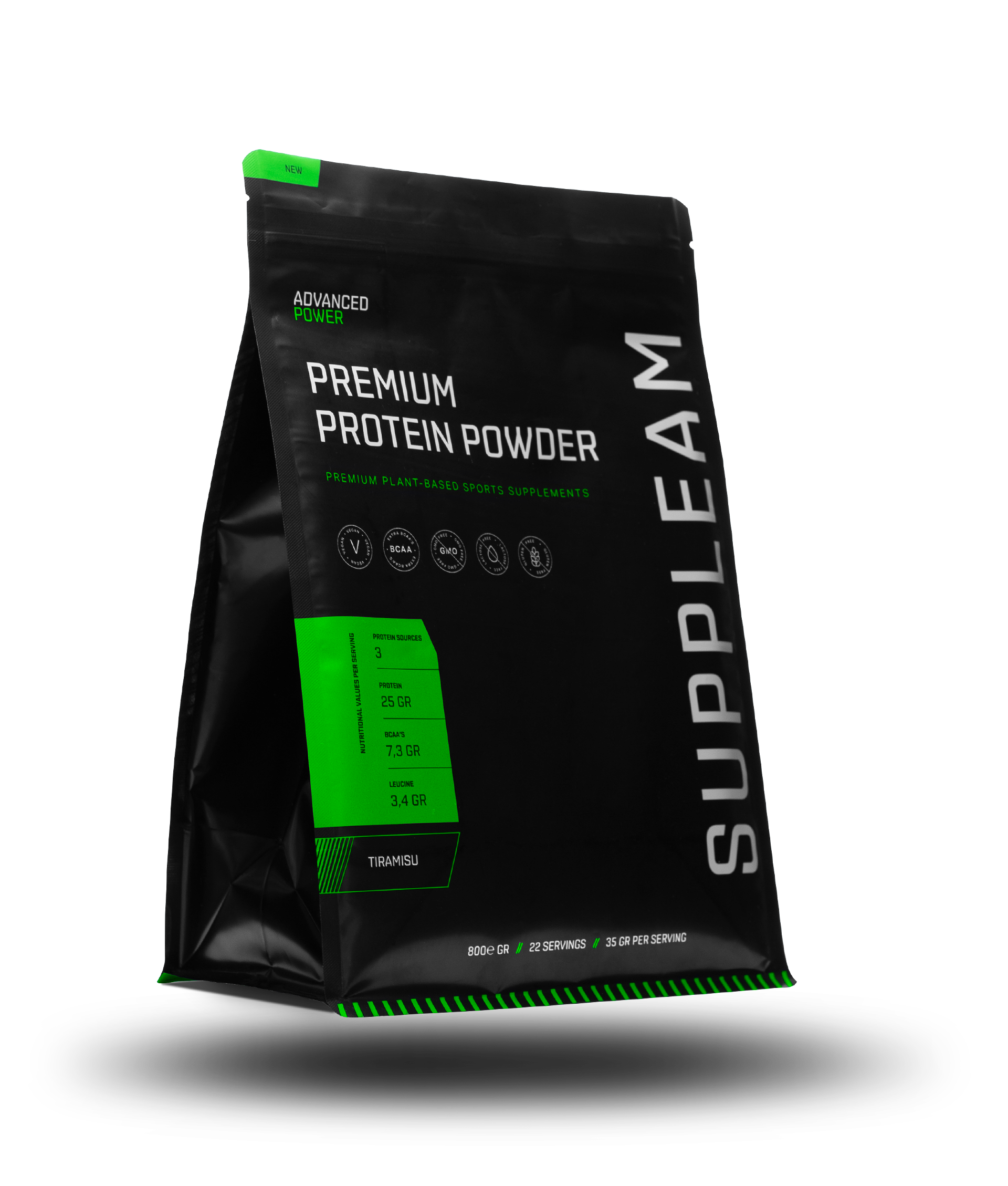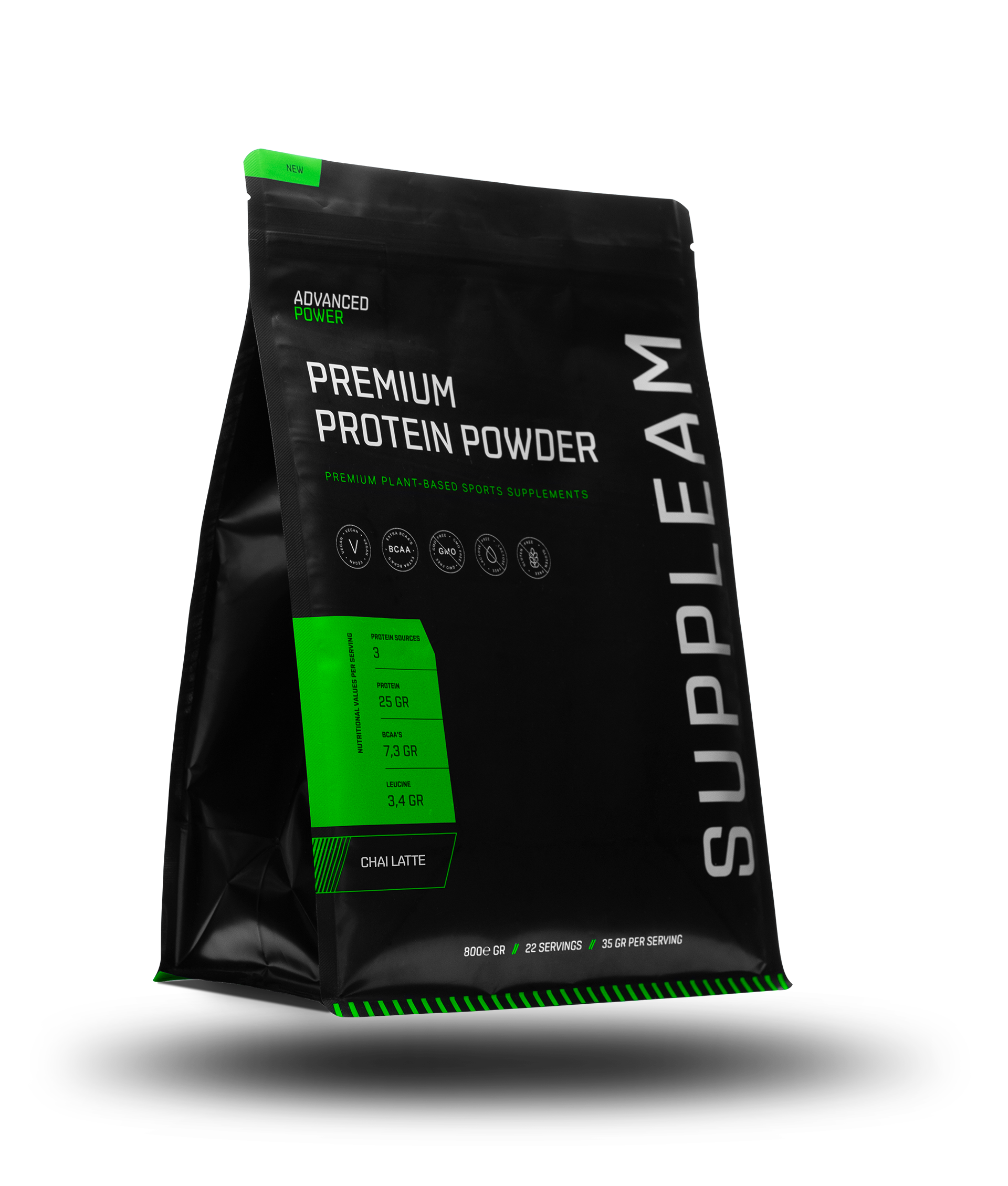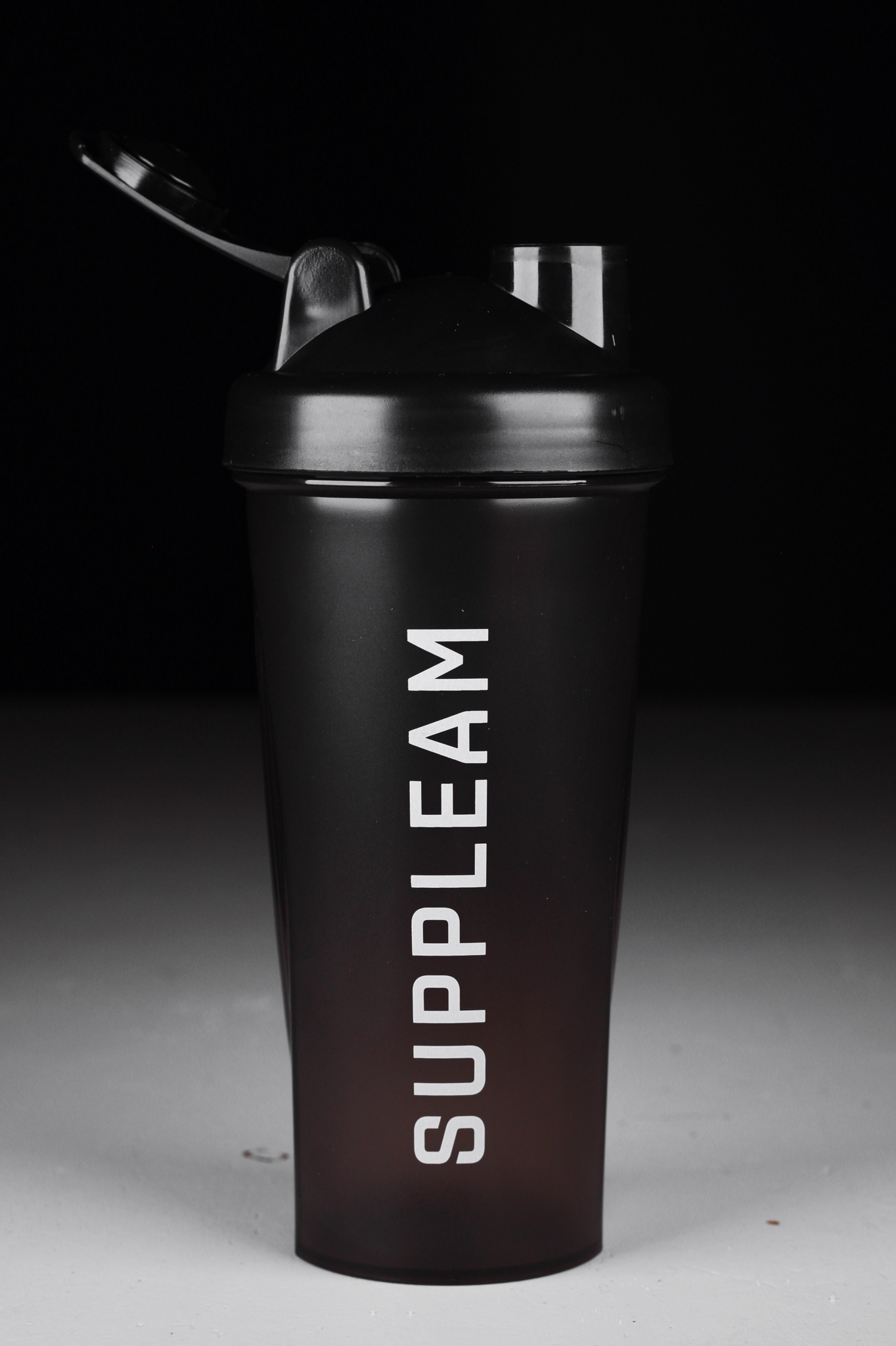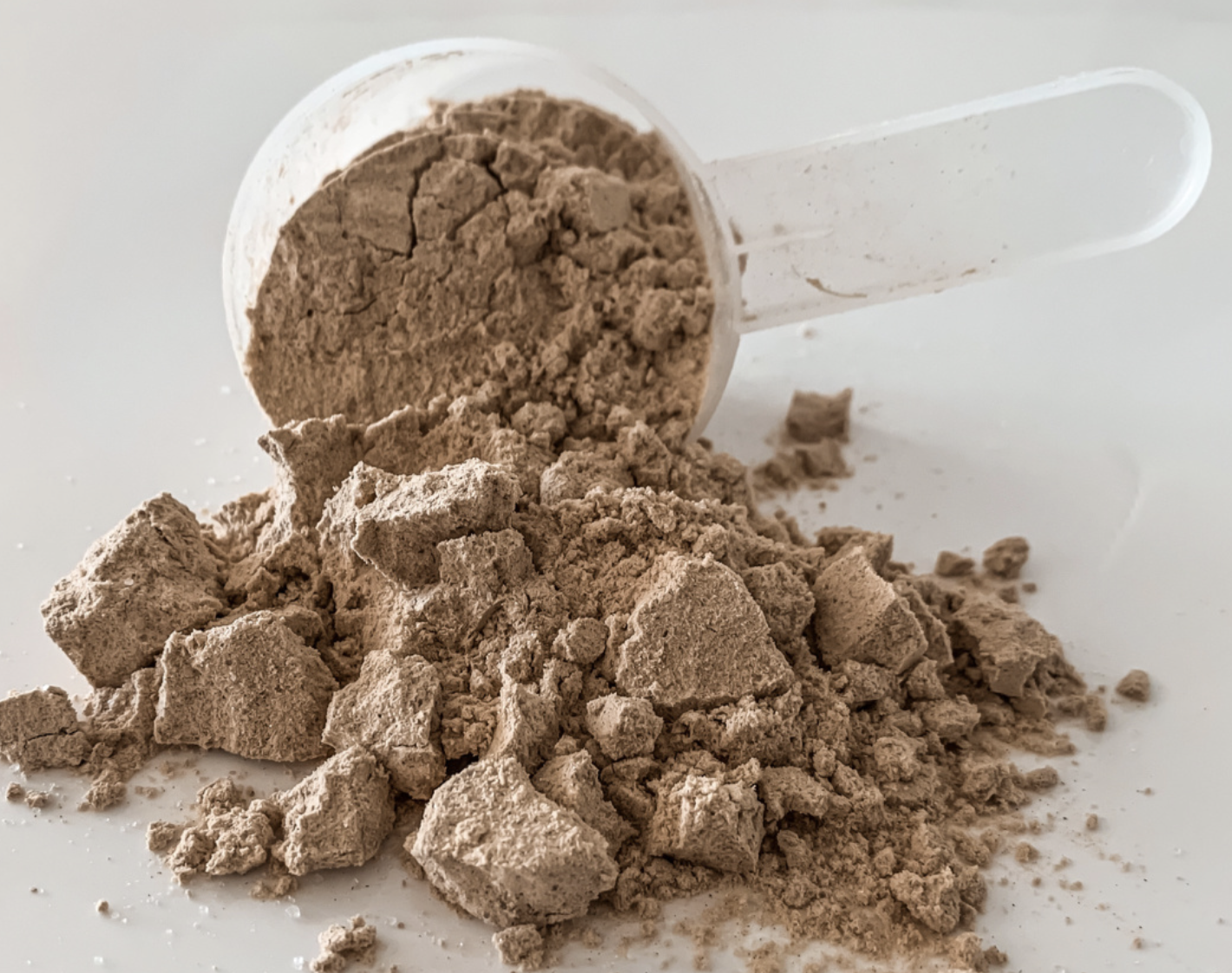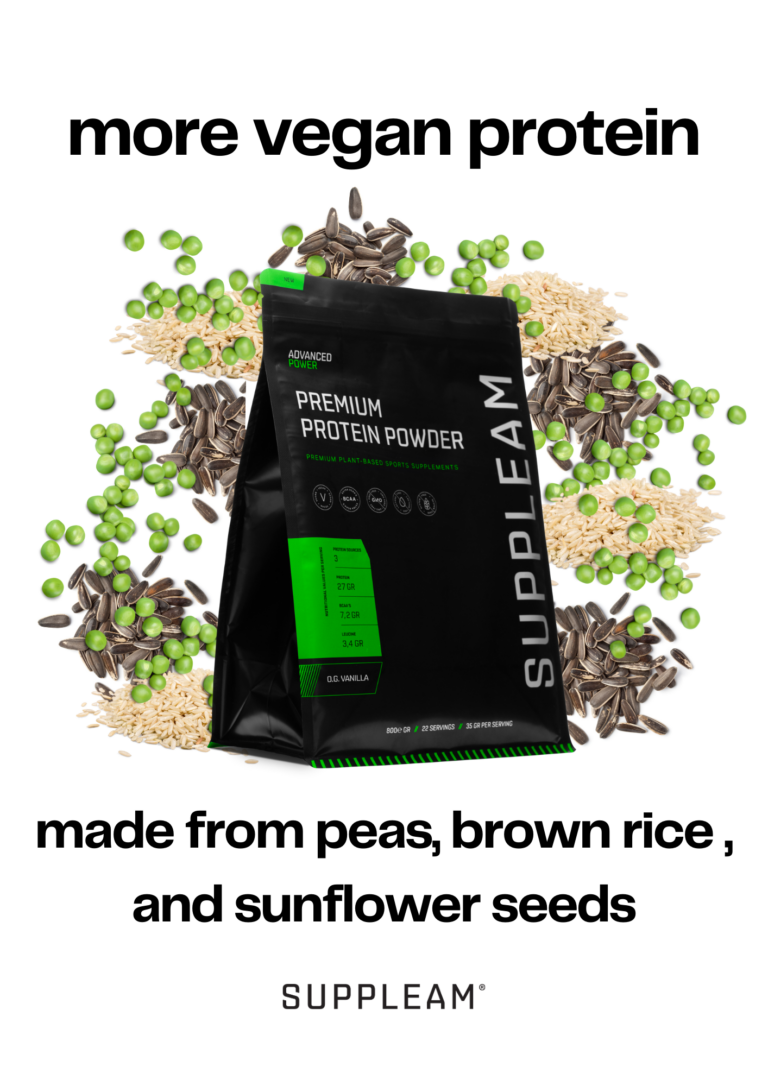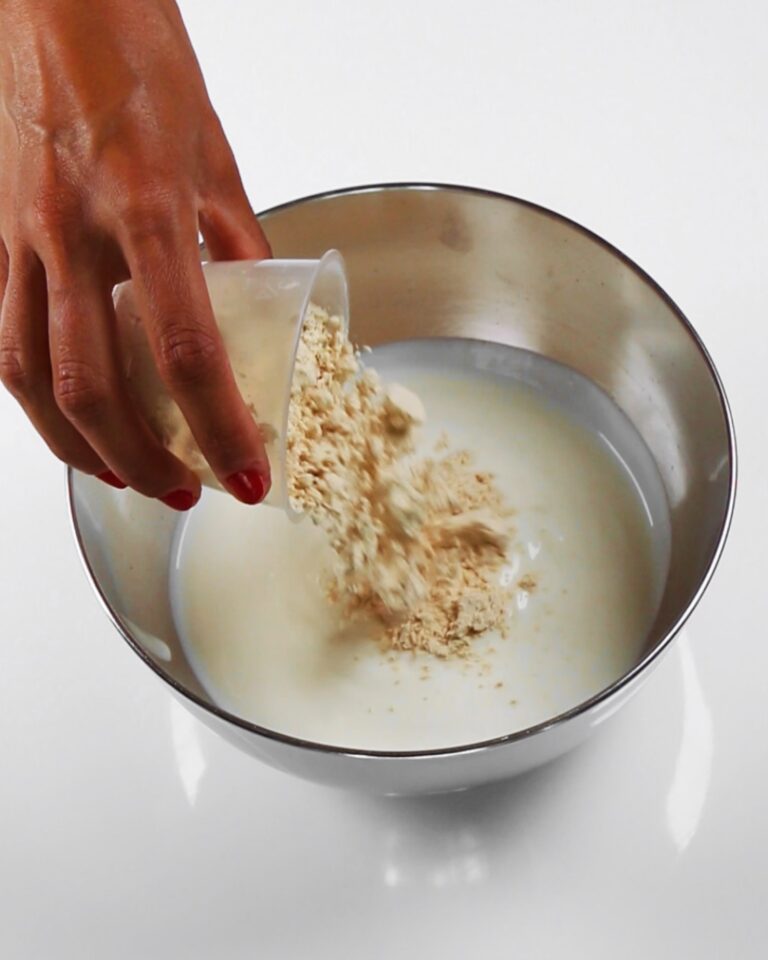Many people want to live lactose-free (cow’s milk-free) because of sustainability, because of lactose intolerance or other health reasons. Sometimes lactose can cause bloating, intestinal discomfort, changes in stool, acne, eczema or flatulence. Do you suspect a lactose intolerance? If so, discuss this with your doctor. In this article, I provide 3 simple basic tips for anyone who wants to embrace a lactose-free life.
Written by A.L. Oosterling BSc sports dietitian, NSCA-CPT, ISAK anthropometrist
What is Lactose?
Lactose is a type of sugar and thus a carbohydrate (milk sugar).
What contains lactose?
Lactose is naturally found in all animal milk: cow’s milk, goat’s milk, sheep’s milk, horse’s milk. Lactose can also be “hidden” in products that contain milk or milk components.
Tip #1: This contains lactose
Milk and milk products
All types of animal milk (cow’s milk, goat’s milk, sheep’s milk, horse’s milk), yogurt, buttermilk, custard, pudding, powdered milk, condensed milk, evaporated milk, milkshake, yogurt drink, chocolate milk, crème fraîche, sour cream, whipped cream, ice cream, cream cheese, fresh cheese, soft cheese, spreadable cheese, cottage cheese, ricotta, mascarpone, mozzarella and halloumi.
Vegetable products
Vegetables à la crėme, for example spinach à la crėme, quiche, creamy tomato soup, mushroom soup, onion soup, vegetables au gratin, breaded vegetable dishes, vegetables with bechamel or cheese sauce.
Fruit Products
Fruit salad with yogurt or (whipped) cream, fruit smoothies made with yogurt or milk, frozen yogurt
Bread products
Bread with raisins, croissant, coffee roll, brioche, naan bread, cookies, muffins, brownies, pancakes, crepes, poffertjes, waffles, baguette cheese, cheese roll, pizza, grilled cheese sandwich
Meat and fish products
Ragout, breaded meat and fish, egg dish made with milk, cream or cheese, pâté
Which meat subtitutes contains lactose?
Dairy-based meat substitute, such as from the brand “Valess”, some breaded meat substitutes
Frying fats
Butter, but sometimes also margarine, low-fat margarine, baking and frying products
Beverages
Whey-based protein drinks, drinking yogurt, whey-based soft drinks such as Rivella or Taksi, instant coffee (cappuccino and latte), coffee drinks (cappuccino, latte, latte macchiato), instant hot chocolate powder, some types of liquor (cream liquor such as Baileys and Amarula).
Soupsand sauces
Creamy soups such as mushroom soup, tomato soup, as well as onion soup and mustard soup, cheese sauce, béchamel sauce, cream sauce and in some ready-made sauces such as peanut sauce and garlic sauce.
Snacks
Protein bars, protein pudding, some types of chips, e.g. paprika flavor, corn/rice waffles with cheese, paprika, caramel, or chocolate flavor, Cheese sticks, cheese flavored crisps, chocolate, white chocolate, chocolate sprinkles, chocolate spread, white chocolate spread, toffees, some nutproducts, some types of candy, such as yogurt gummies.
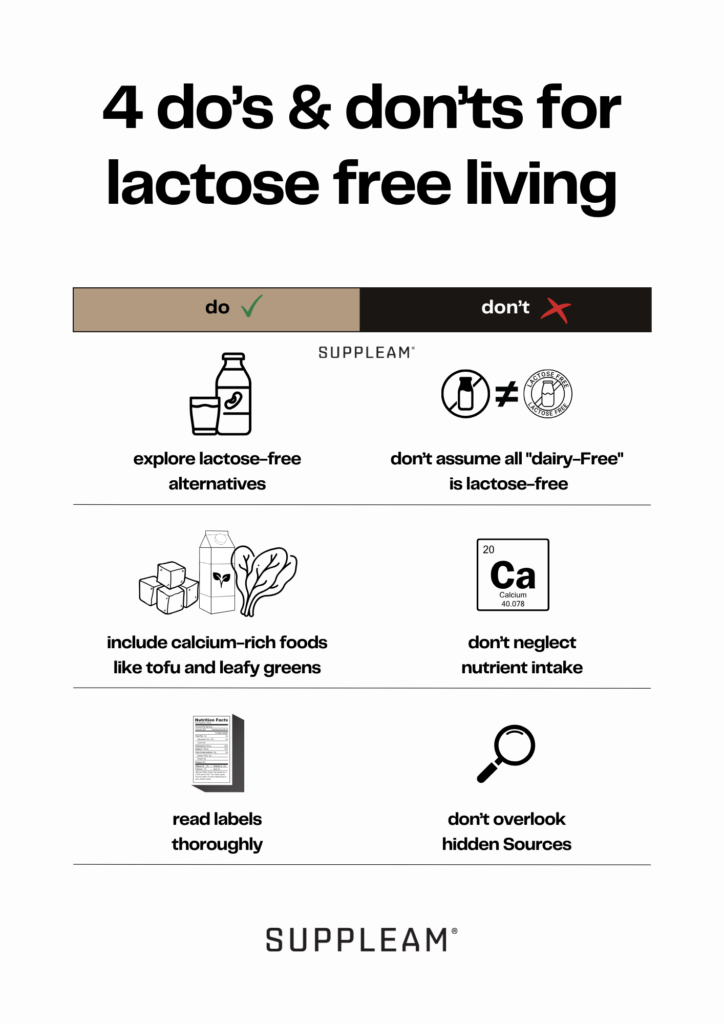
Tip 2: Hidden lactose and e-numbers containing lactose
These days, lactose-free shopping is fairly easy. Often there will be the words “lactose-free” or “vegan” on the front of the package. Then you know the product is truly lactose-free. However, sometimes this isn’t mentioned and that’s when you’ll have to read the ingredient list. How do you know if a specific product contains lactose? Besides words like milk, yogurt, cottage cheese, cheese and butter, these are the words that can indicate the presence of lactose:
- Beta-lactoglobulin
- Butter concentrate
- Butter concentrate
- Butter oil
- Butter powder
- Caseinate
- Casein
- Dry milk components
- Hydrolyzed milk protein
- Lactalbumin
- Lactoferrin
- Lactoperoxidase
- Lactose
- Skimmed milk components
- Skimmed milk powder
- Milk protein
- Milk derivative
- Milk powder
- milk sugar
- Milk fat
- Milk salt
- Nisin (E234)
- Recaldent
- Cream
- Transglutaminase
- Full fat (whole) milk powder
- Whey (powder)
- Curd
What e-numbers contain lactose?
These e-numbers may contain lactose: E101, E213, E234, E966
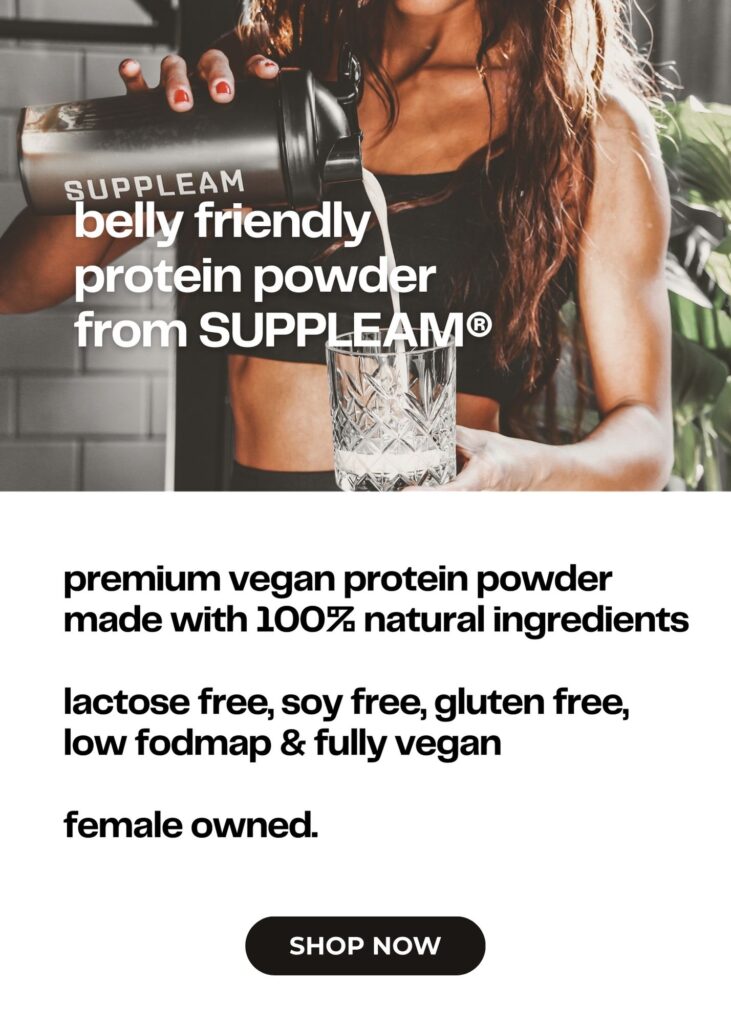
Tip 3: Dairy-free and lactose-free dairy with the most protein
When dairy with lactose is not an option, it’s time to explore the world of dairy alternatives. From almond milk to coconut yogurt, there are plenty of delicious options to try, but it’s important to choose dairy alternatives that are healthy (most of the time).. The healthiest dairy alternatives contain plenty of protein and little saturated fat.
Healthiest plant-based milk
There are many differences in nutritional values between plant-based milk/drink varieties. Nutritional values also vary widely by brand. So, always check the nutritional values on the package. Unsweetened soy drink and unsweetened almond drink are the most standardized in terms of nutritional values. The healthiest plant-based milk is unsweetened soy milk/drink or pea milk/drink. This is because its nutritional value in terms of protein and energy is most similar to animal milk. You can also choose an unsweetened plant-based drink that is low in protein and mix with a vegan protein powder, see table.
| Product | Kcal per 100gr | Protein per 100gr |
| Semi-skimmed milk | 48 kcal | 3.5gr |
| Unsweetened soy drink | 39 kcal | 3.7gr |
| Unsweetened pea drink | 44 kcal | 3.2gr |
| Oat Drink (brand: oatly) | 46 | 1gr |
| Unsweetened almond drink | 13 | 0.5gr |
| Unsweetened almond drink + 5gr SUPPLEAM® vegan protein powder | 28 | 4.3gr |
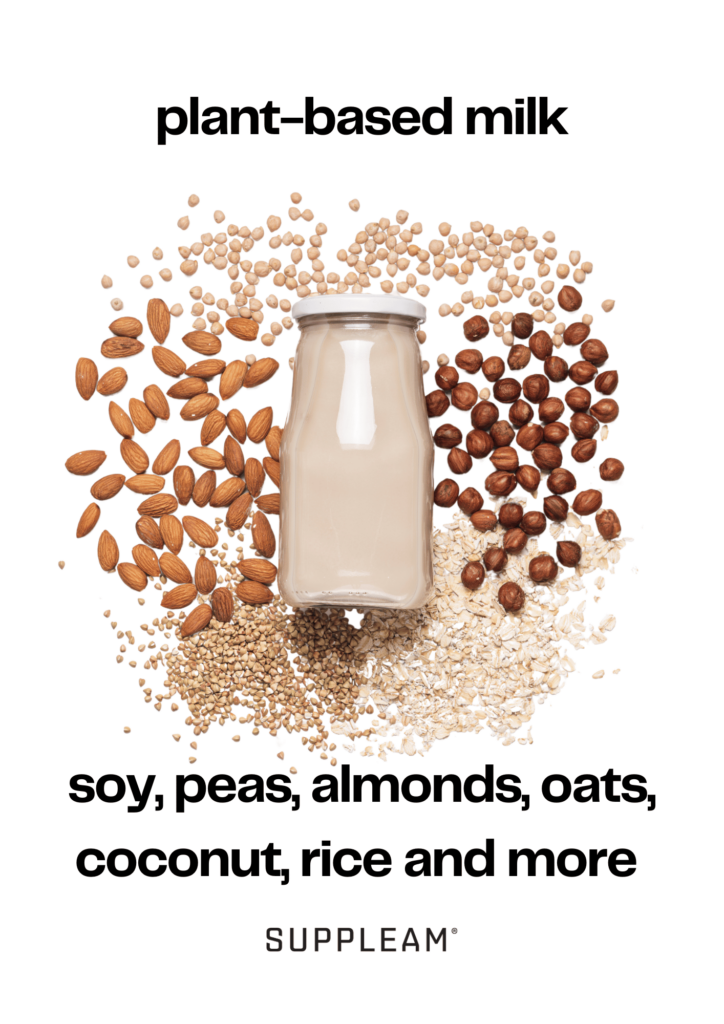
Healthiest plant-based yogurt
There are many differences in nutritional values between plant-based yogurt varieties. The healthiest plant-based yogurt is unsweetened soy yogurt/quark. This is most similar to animal yogurt in terms of nutrients You can also choose a plant-based yogurt that is low in protein and mix with a vegan protein powder, see table. If you want to read more about how to use vegan protein powder, click here.
| Product | Kcal per 100gr | Protein per 100gr |
| Semi-skimmed yogurt | 50 kcal | 4.8gr |
| Unsweetened soy yogurt | 43 kcal | 4.5gr |
| Unsweetened soy quarck | 54 kcal | 5.7gr |
| Oat yogurt (brand: Oatly) | 84 kcal | 1.5gr |
| Unsweetened oat yogurt (brand: Albert Heijn) | 81 kcal | 1.7gr |
| Unsweetened almond quarck (brand: Albert Heijn) | 119 kcal | 2.7gr |
| Almond yogurt (brand: Jumbo) | 68 kcal | 0.7gr |
| Coconut yogurt (brand: Alpro) | 84 kcal | 0.6gr |
| Coconut yogurt (brand: Jumbo) | 135 kcal | 1.2gr |
| Coconut yogurt daily delight Abbot Kinney’s | 92 kcal | 0.9gr |
| Coconut yogurt coco start Abbot Kinney’s | 179 kcal | 1.1gr |
| + 6gr SUPPLEAM® vegan protein powder | +18 kcal | +4.6gr |
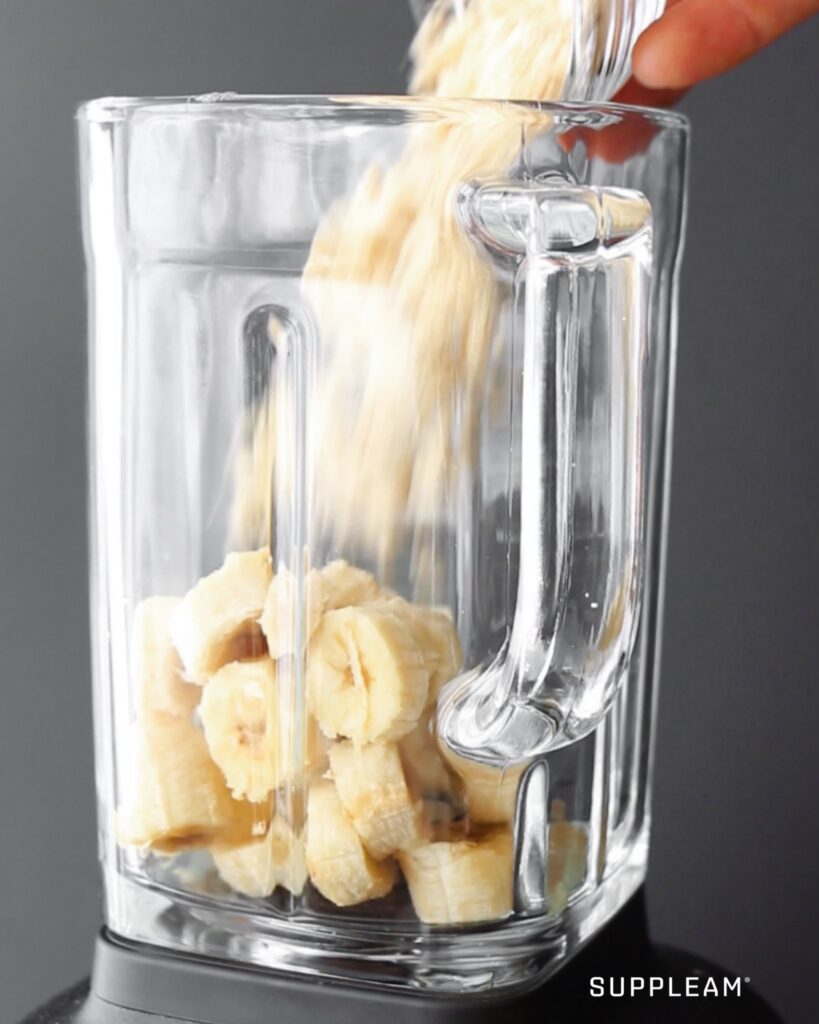
Conclusion
These 3 tips are indispensable for anyone who wants to learn to eat lactose-free, whether it’s because of sustainability, lactose intolerance, or other health reasons.
- – Understand what contains lactose, but also be aware of “hidden” lactose in food categories such as vegetables, fruits, breads, meat and fish products, meat substitutes, cooking fats, beverages, soups, sauces, and snacks.
- – Shopping for lactose-free products is easy these days, but reading ingredient lists remains crucial. Recognize words and E numbers that may indicate the presence of lactose.
- – Make conscious choices in plant-based milk and yogurt based on their nutritional values, and consider using vegan protein powders to increase protein intake from low-protein plant-based milk products.
Frequently Asked Questions
Does lactic acid contain lactose?
No, even though the word “lactic” is included in the word, it is not derived from milk and therefore does not contain lactose.
Does lactate contain lactose?
No, the word is similar, but lactate does not come from milk and therefore does not contain lactose.
Is there lactose in protein powder?
Sometimes, there are protein powders based on plant-based raw materials and animal-based raw materials. Animal protein powders that contain lactose include whey and casein.
How is lactose-free milk made?
Lactose is filtered out of the milk or broken down into individual sugars using the enzyme lactase.

